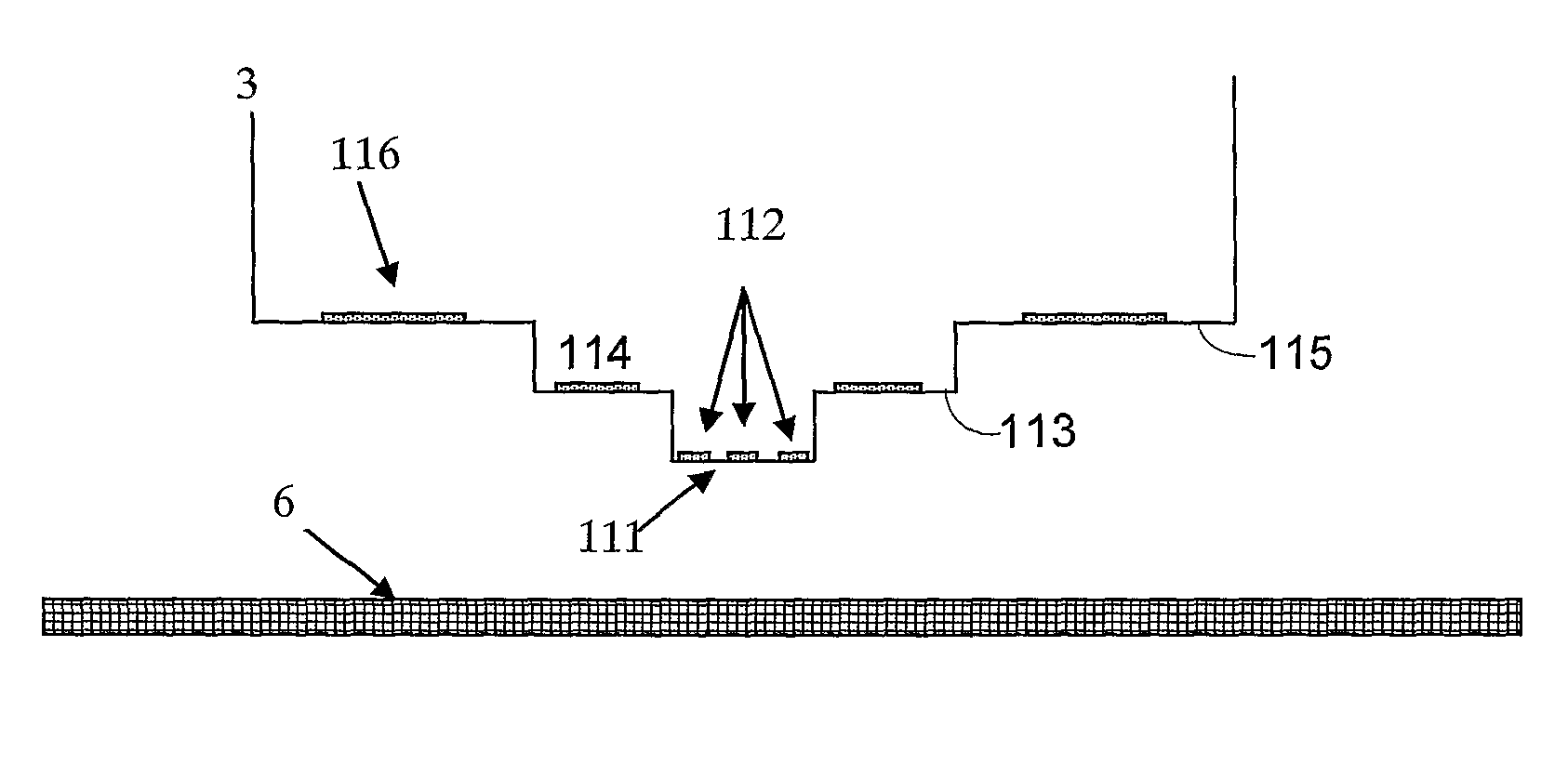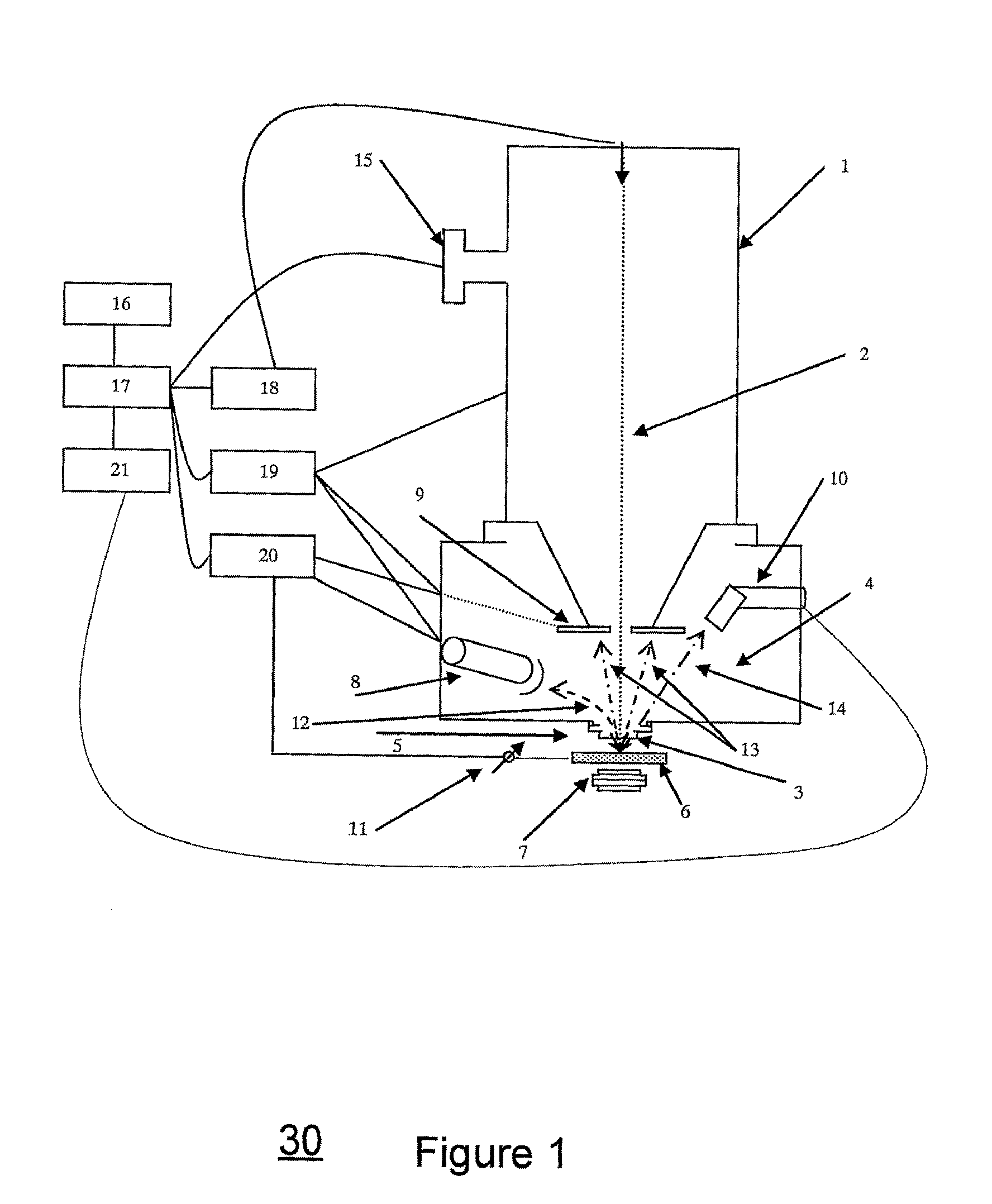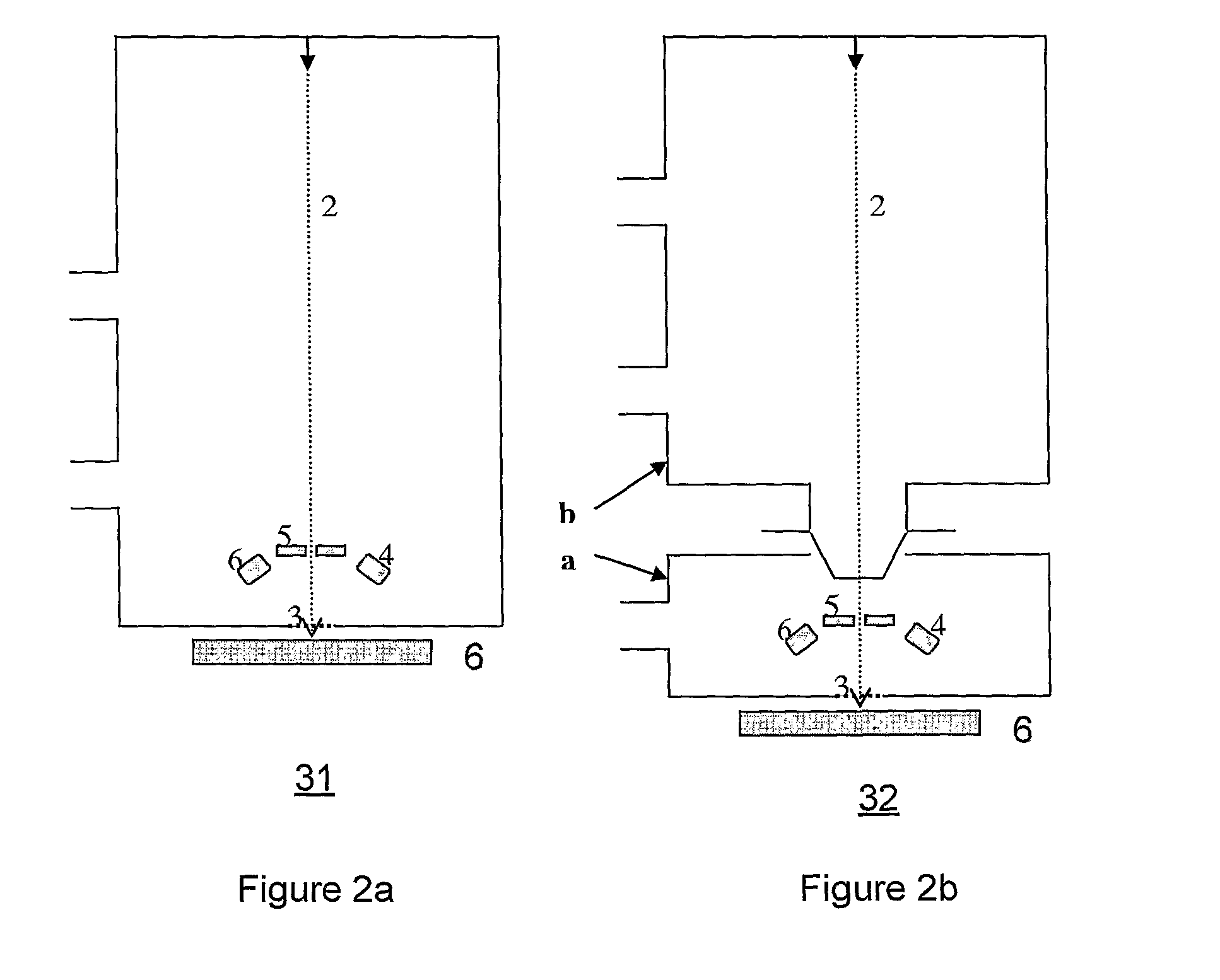Interface, a method for observing an object within a non-vacuum environment and a scanning electron microscope
nvironment technology, applied in the field of interface, can solve the problems of reducing the throughput of scanning electron microscope and rendering such a scanning electron microscope impractical, and achieve the effect of improving detection
- Summary
- Abstract
- Description
- Claims
- Application Information
AI Technical Summary
Benefits of technology
Problems solved by technology
Method used
Image
Examples
Embodiment Construction
[0099]According to an embodiment of the invention the throughput of a scanning electron microscope that observes an object (positioned in a non-vacuum environment) is increased by illuminating multiple apertures (sealed by one or more membranes) simultaneously. These multiple apertures can form an aperture array or can be a part of an aperture array.
[0100]According to an embodiment of the invention one or more areas of an inspected object (positioned in a non-vacuum environment) are scanned by deflecting one or more electron beams and also introducing a corresponding mechanical movement of one or more apertures through which the one or more electron beams pass. This combination of deflection and mechanical movement increases the field of view of the system.
[0101]According to yet another embodiment of the invention multiple apertures that are sealed by one or more membranes are provided. The apertures and the membranes can differ by their size and thickness (of membranes) thus provid...
PUM
| Property | Measurement | Unit |
|---|---|---|
| thickness | aaaaa | aaaaa |
| electron accelerating voltages | aaaaa | aaaaa |
| thickness | aaaaa | aaaaa |
Abstract
Description
Claims
Application Information
 Login to View More
Login to View More - R&D
- Intellectual Property
- Life Sciences
- Materials
- Tech Scout
- Unparalleled Data Quality
- Higher Quality Content
- 60% Fewer Hallucinations
Browse by: Latest US Patents, China's latest patents, Technical Efficacy Thesaurus, Application Domain, Technology Topic, Popular Technical Reports.
© 2025 PatSnap. All rights reserved.Legal|Privacy policy|Modern Slavery Act Transparency Statement|Sitemap|About US| Contact US: help@patsnap.com



